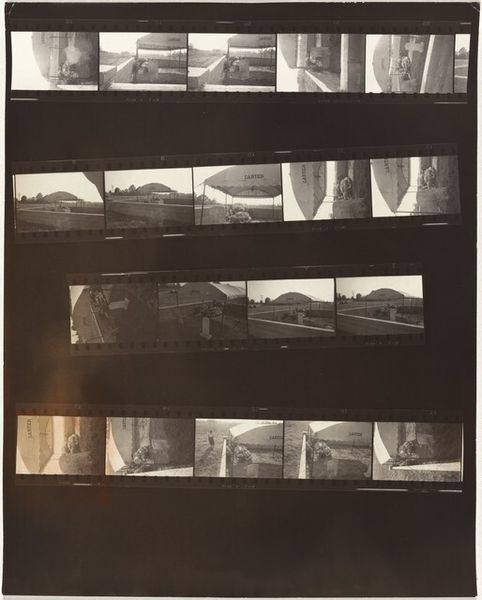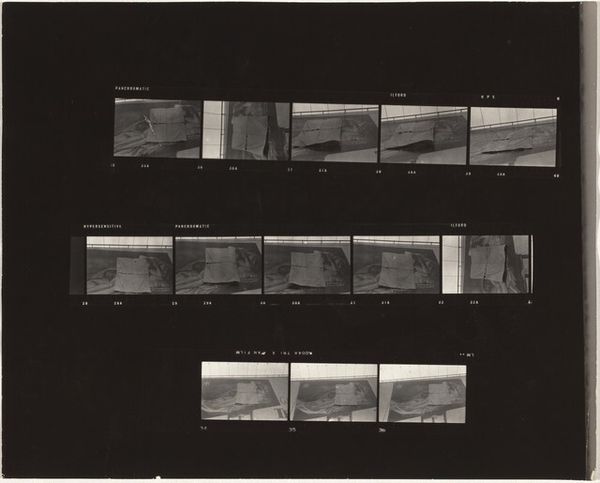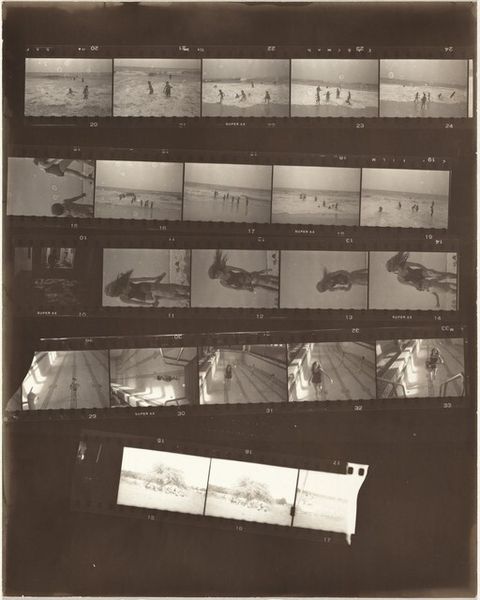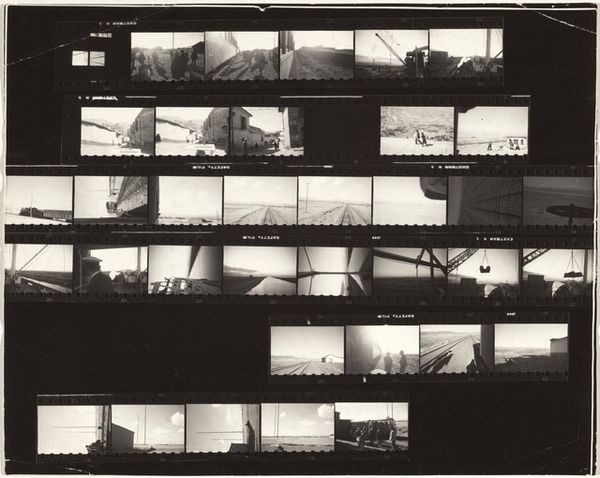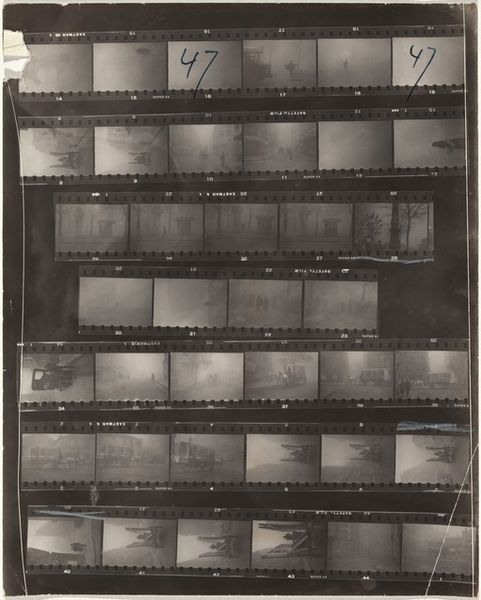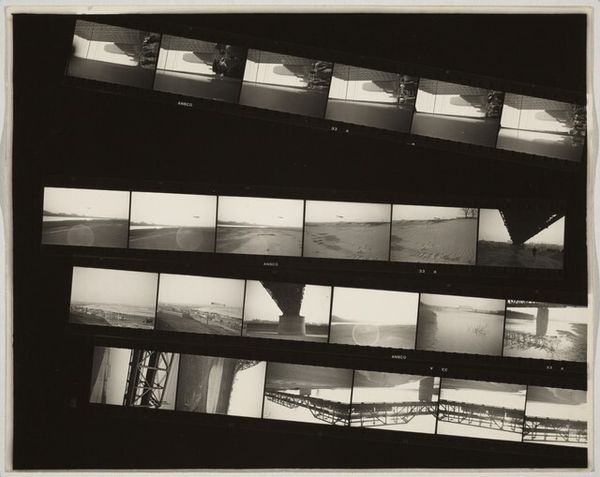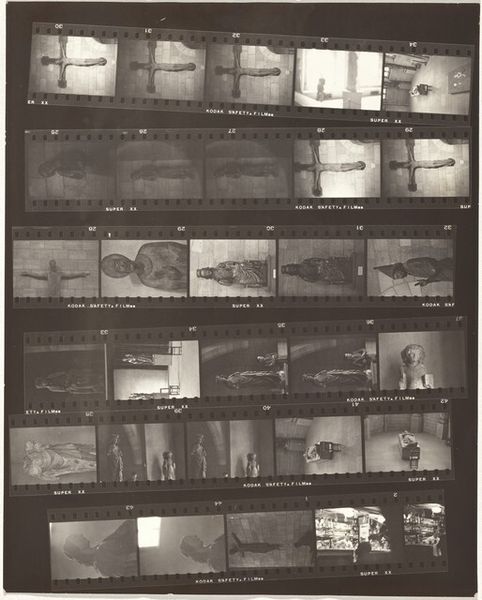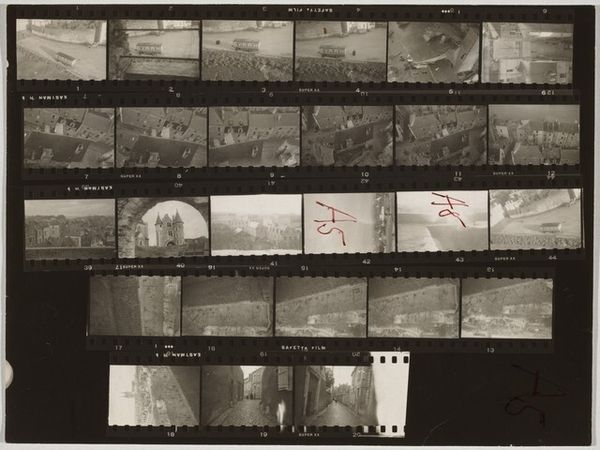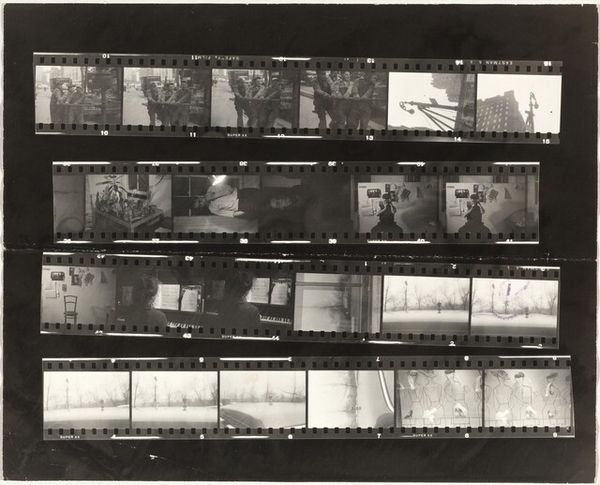
print, photography, gelatin-silver-print
#
film photography
# print
#
landscape
#
archive photography
#
street-photography
#
photography
#
gelatin-silver-print
#
film
#
modernism
Dimensions: overall: 11.2 x 29.8 cm (4 7/16 x 11 3/4 in.)
Copyright: National Gallery of Art: CC0 1.0
Curator: Here we have Robert Frank’s "On ship—New York to Paris 3," taken in 1949. It's a gelatin silver print, offering a glimpse into a journey across the Atlantic. What's your initial take on it? Editor: Raw. Immediately, I'm struck by its almost accidental quality, but also, simultaneously, a keen awareness of how transition and displacement impacted even the wealthy who could afford such trips. Curator: I agree, there is a certain spontaneity that captures a transitional moment. Look at the layering – we have strips of the original photographic film, complete with numbering. Notice the '3' scrawled in red crayon. It is a raw indexing of time and experience. Editor: Right. It foregrounds process and challenges conventional notions of documentary photography. The composition itself seems to be about the act of looking, about making visible what is normally unseen—the apparatus of image-making. It speaks volumes about how experience is captured and packaged, especially within the socio-political landscape of postwar travel and mobility. The ship, traditionally a symbol of passage to freedom, is now carrying refugees fleeing postwar turmoil. Curator: The shipboard setting in many ways evokes a floating world, suspended between departure and arrival. It's worth thinking about Frank as someone in his mid-twenties, displaced from Europe by war himself and also the long established visual language associated with seafaring, migration, trade, colonialism, etc. Are there recognizable images from travel narratives? Is he repeating or critiquing them? Editor: Yes! Are these luxury cruises of the elite? Or a desperate bid for a better life, the kind so poignantly portrayed by artists like Jacob Lawrence during the Great Migration? Are the travelers hoping for transformation? In that historical moment, Frank captures the precariousness of modern life through this very physical sense of being in transit, untethered and vulnerable. Curator: Exactly. Even formally, it’s unsettling – not quite landscape, not quite portraiture. Editor: This single print encapsulates broader themes of displacement, hope, and disillusionment, rendered through Frank's inimitable eye for the ordinary and overlooked. It reminds us to interrogate who gets to move freely and what that mobility truly signifies. Curator: The piece, indeed, seems to ask us to meditate not just on the voyage itself, but on the invisible narratives etched onto its surface, both literal and figurative. Editor: It does; thank you.
Comments
No comments
Be the first to comment and join the conversation on the ultimate creative platform.
